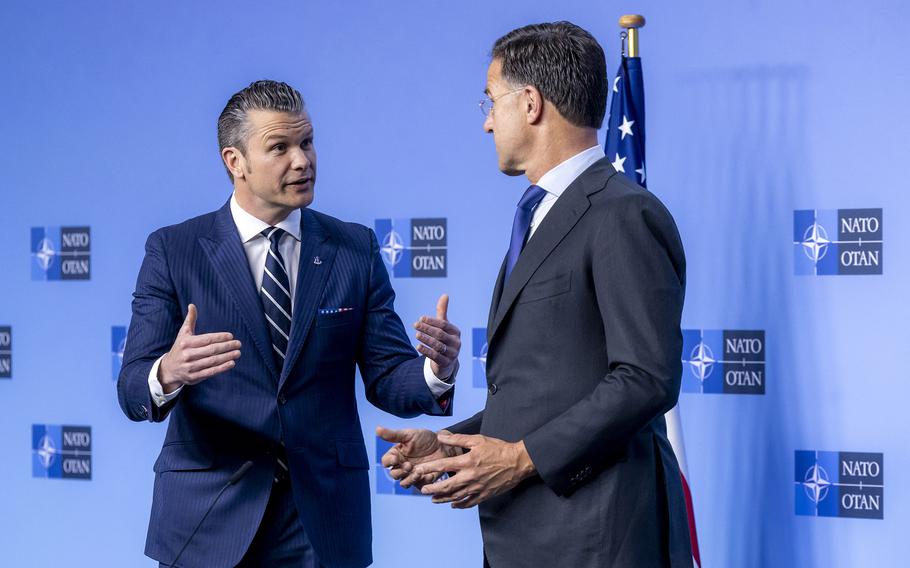
Defense Secretary Pete Hegseth, left, and NATO Secretary General Mark Rutte make opening remarks at a defense ministers meeting at NATO headquarters in Brussels on June 5, 2025. Hegseth said that for NATO to remain credible, Europe must channel growing defense budgets into hard power rather than relying primarily on U.S. military strength. (NATO)
Increased military spending in Europe must be directed toward hard-power capabilities to give NATO credibility that goes beyond American firepower, Defense Secretary Pete Hegseth said Thursday.
His remarks at the opening of a defense ministers meeting in Brussels drove home President Donald Trump’s insistence that all members increase defense spending to 5% of gross domestic product, up from the current NATO 2% benchmark.
“It’s that hard power that actually deters. And it can’t just be U.S. capabilities,” Hegseth said.
He added that Washington will not tolerate exceptions on meeting the new threshold. For many countries, that will require a huge increase in expenditures.
“The reason I’m here is to make sure every country in NATO understands (it) has to contribute at that level of 5% as a recognition of the nature of the threat,” Hegseth said.
Some allies, such as Italy and Spain, are yet to reach even the 2% level. It’s not clear what the consequences will be if members balk at Trump’s demands.
For NATO, the stakes are high. Trump has long made clear that the United States’ commitment to NATO hinges on fulfillment of defense spending obligations.
In the past, Trump also has suggested that the U.S. could be unwilling to defend a member that lagged on military spending.
Allies are now fine-tuning the details on timelines for reaching the 5% mark, which is expected to be agreed to during a June leaders summit in the Dutch city of The Hague. Trump is expected to attend the meeting.
On Thursday, NATO defense ministers also agreed on new capability targets that designate what forces and weapons systems individual countries must provide toward allied defense plans.
The capability targets are focused on needs such as air and missile defense, long-range weapons and large land maneuver formations.
Those targets will help NATO track where the increased spending is going and ensure that it results in a more formidable combat force, Hegseth said.
Among European allies, there has been greater urgency to develop military capabilities in connection with concerns that the United States could reduce its military presence on the Continent.
Germany, which has a long track record of lackluster defense spending, now says it’s prepared to meet the 5% mark.
Such moves are aimed at ensuring that allies can manage the conventional defense of Europe should the U.S. redirect forces to the Pacific, which has been a Pentagon priority.
Hegseth is reviewing global force posture across the military, and that could have implications on where troops are deployed worldwide.